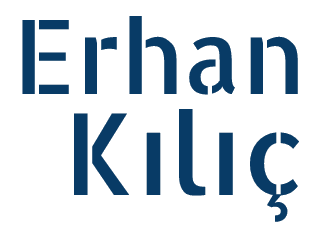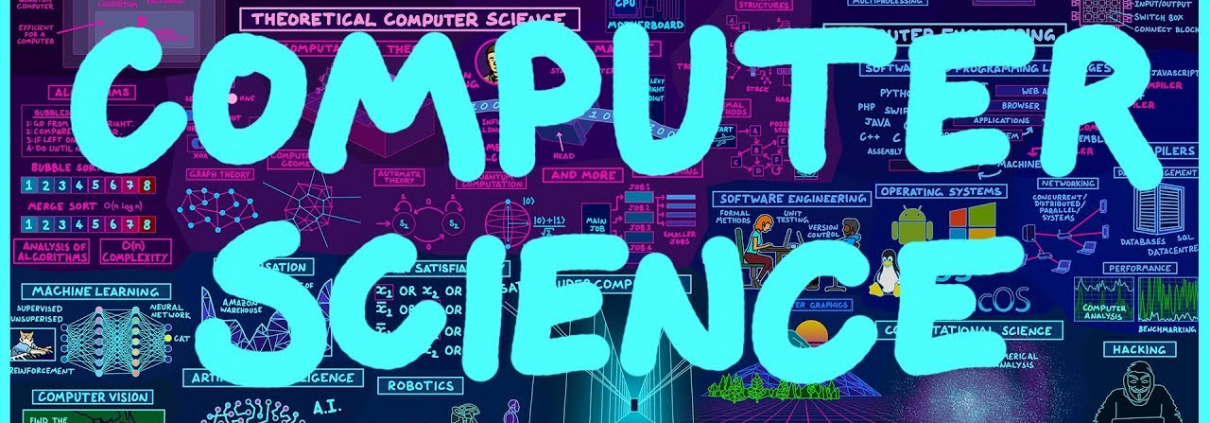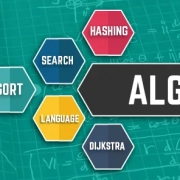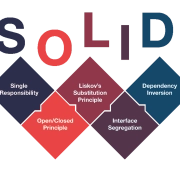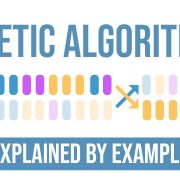Bilgisayar Bilimlerini Öğrenmek İçin Kapsamlı Bir Müfredat
Dijitalleşen dünyamızda bilgisayar bilimlerinin önemi tartışılmaz. Akıllı telefonlardan karmaşık simülasyonlara ve yeniliklere kadar, bilgisayar bilimleri modern hayatın birçok yönünü destekler. Bu alanda yetkin olmak isteyenler için yapılandırılmış ve kapsamlı bir müfredat şart. Bu yazıda, bilgisayar bilimlerini derinlemesine öğrenmek için gereken temel bileşenleri keşfedeceğiz. Kendi öğrenme yolculuğumdan örneklerle, bu müfredatı sizin için samimi ve anlaşılır bir şekilde açıklayacağım. Haydi, başlayalım!
Bilgisayar Bilimlerine Giriş
Her yolculuk tek bir adımla başlar ve bilgisayar bilimlerinde bu adım, temelleri anlamaktan geçer. Giriş aşaması, disiplini şekillendiren ana kavramlara, tarihsel bağlama ve temel fikirlere bir bakış sunar.
- Programlamaya Giriş Programlama dillerinin temellerini, değişkenleri, veri tiplerini ve kontrol yapılarını öğrenmekle başlar. Python, Java veya C++, yeni başlayanlar için popüler seçeneklerdir. İlk kod yazma deneyimimde Python ile basit bir hesap makinesi yaptım ve bu, programlamanın büyüsünü keşfetmemi sağladı!
- Algoritmalar ve Veri Yapıları Algoritmaların ne olduğunu, verimliliklerini ve diziler, bağlı listeler, yığınlar ve kuyruklar gibi temel veri yapılarını uygulamayı öğrenmek. Bir sıralama algoritması yazarken, veri yapılarının önemini fark ettim; bu, kodlarımı daha verimli hale getirdi.
- Bilgisayar Mimarisi Bilgisayarın iç işleyişini anlamak: CPU, bellek, giriş/çıkış sistemleri ve bunların programları nasıl çalıştırdığı. Bir mikroişlemci simülasyonu üzerinde çalışırken, donanımın yazılımı nasıl desteklediğini görmek büyüleyiciydi.
Bilgisayar Bilimlerinin Temel Kavramları
Temel bilgiler yerleştiğinde, bilgisayar bilimlerini tanımlayan çekirdek kavramlara dalarız.
- Nesne Yönelimli Programlama (OOP) Kalıtım, çok biçimlilik ve kapsülleme gibi OOP ilkelerini ve tasarım kalıplarını derinlemesine keşfetmek. Bir oyun projesinde, OOP ile modüler kod yazarak karmaşıklığı azalttım.
- İşletim Sistemleri İşletim sistemlerinin işlevlerini, süreç yönetimi, bellek yönetimi, dosya sistemleri ve donanımla etkileşimlerini anlamak. Bir süreç yönetimi simülasyonu yaparken, işletim sistemlerinin ne kadar kritik olduğunu gördüm.
- Veritabanları Veritabanı sistemlerini, SQL’i, normalizasyonu ve verimli, ölçeklenebilir veri depolama çözümleri geliştirmeyi öğrenmek. Bir e-ticaret projesinde, SQL ile veri sorguları yazarak kullanıcı verilerini hızlıca işledim.
- Bilgisayar Ağları Ağ protokolleri, mimari, yönlendirme ve güvenlik konularını öğrenerek internet üzerinden veri aktarımını anlamak. Bir ağ simülasyonunda, veri paketlerinin nasıl yönlendirildiğini çözmek inanılmaz öğreticiydi.
- Yazılım Mühendisliği Yazılım geliştirme yaşam döngüsü, sürüm kontrolü, test etme, hata ayıklama ve sağlam, bakımı kolay yazılımlar için en iyi uygulamaları keşfetmek. Git ile bir ekip projesinde çalışırken, sürüm kontrolünün işbirliğini nasıl kolaylaştırdığını deneyimledim.
Bilgisayar Bilimlerinde Uzmanlaşma
Öğrenme yolculuğunuz ilerledikçe, ilgi alanlarınıza göre belirli alt alanlarda uzmanlaşabilirsiniz.
- Yapay Zeka ve Makine Öğrenimi Yapay zeka kavramlarını, sinir ağlarını ve makinelerin verilerden öğrenmesini sağlayan algoritmaları keşfetmek. Bir görüntü tanıma projesinde, makine öğrenimi ile nesneleri sınıflandırdım ve sonuçlar etkileyiciydi!
- Web Geliştirme Ön yüz (HTML, CSS, JavaScript) ve arka yüz (sunucu tarafı betikleri, veritabanları) teknolojilerini öğrenerek etkileşimli web uygulamaları oluşturmak. Bir portföy sitesi geliştirirken, bu teknolojilerin kullanıcı deneyimini nasıl zenginleştirdiğini gördüm.
- Siber Güvenlik Güvenlik tehditlerini, kriptografiyi, etik hacklemeyi ve dijital varlıkları koruma stratejilerini anlamak. Bir siber güvenlik simülasyonunda, bir sistemi korurken zayıf noktalarını tespit etmek heyecan vericiydi.
- Veritabanı Yönetimi Veri ambarı, veri madenciliği ve büyük veri yönetimi gibi ileri veritabanı konularına dalmak. Büyük bir veri setini analiz ederken, bu becerilerle verimliliği artırdım.
- Grafik ve Oyun Geliştirme Bilgisayar grafikleri, 3D modelleme ve etkileşimli oyunlar/simülasyonlar geliştirmeyi öğrenmek. Bir oyun prototipi oluştururken, grafiklerin büyüsüne kapıldım!
İleri Konular ve Araştırma
Bilginin sınırlarını zorlamak isteyenler için, ileri konular ve araştırma alanları heyecan verici bir yol sunar.
- Bilgisayarlı Görme Bilgisayarların dünyadaki görsel bilgileri anlamasını sağlayan teknolojileri keşfetmek. Otonom araçlar veya görüntü analizi gibi alanlarda kritik. Bir yüz tanıma projesinde, bu teknolojinin gücünü gördüm.
- Doğal Dil İşleme Bilgisayarların insan dilini anlamasını, yorumlamasını ve üretmesini sağlayan teknolojileri incelemek. Bir sohbet botu geliştirirken, dil işleme becerilerinin ne kadar etkili olduğunu fark ettim.
- Kuantum Hesaplama Kuantum mekaniği ilkelerini kullanarak kuantum bilgisayarlarının gücünü anlamak. Klasik bilgisayarlardan çok daha hızlı çözümler sunabilir. Bu alanda bir simülasyon çalışması, geleceğin teknolojilerini hayal etmemi sağladı.
- Dağıtık Sistemler Birden fazla bağlantılı bilgisayardan oluşan sistemleri tasarlamayı ve yönetmeyi öğrenmek. Bulut bilişim ve büyük ölçekli uygulamalarda yaygın. Bir bulut tabanlı proje, bu sistemlerin ölçeklenebilirliğini anlamamı sağladı.
Pratik Projeler ve Gerçek Dünya Uygulamaları
Kapsamlı bir müfredat, teorik bilgiyi pratik uygulamalarla pekiştirmelidir.
- Bitirme Projeleri Müfredat boyunca öğrenilen kavramları birleştiren karmaşık, çok disiplinli projeler yapmak. Bir veri analizi bitirme projesi, teoriyi pratiğe dökmemde çok etkili oldu.
- Staj ve İş Deneyimi Endüstride staj veya yarı zamanlı işlerle pratik deneyim kazanmak. Bir yazılım stajında, teorik bilgimi gerçek dünya senaryolarına uyguladım ve bu, öğrenimimi güçlendirdi.
- Açık Kaynak Katkıları Açık kaynak projelere katkıda bulunarak dünya çapındaki geliştiricilerle işbirliği yapmak ve mevcut yazılımları iyileştirmek. GitHub’da bir projeye katkıda bulunurken, toplulukla çalışmanın değerini keşfettim.
Sonuç
Bilgisayar bilimleri, sürekli evrilen geniş bir alan. Programlama ve algoritmalardan yapay zeka, web geliştirme veya siber güvenliğe kadar uzanan bir müfredat, bu dinamik alanda başarılı olmak için gerekli araçları sunar. Temel kavramları benimseyerek, ilgi alanlarında uzmanlaşarak ve ileri konulara dalarak, hem değerli beceriler kazanabilir hem de yenilik ve yaratıcılıkla geleceği şekillendirebilirsiniz. Bilgisayar bilimleri yolculuğum, beni hem teknik hem de yaratıcı olarak geliştirdi ve bu alanda sınırların olmadığını gösterdi!
Siz bilgisayar bilimlerini hangi alanlarda keşfettiniz? İlginç bir proje mi yaptınız? Yorumlarda paylaşın, birlikte tartışalım! Daha fazla ipucu için bloguma göz atın veya benimle iletişime geçin!
